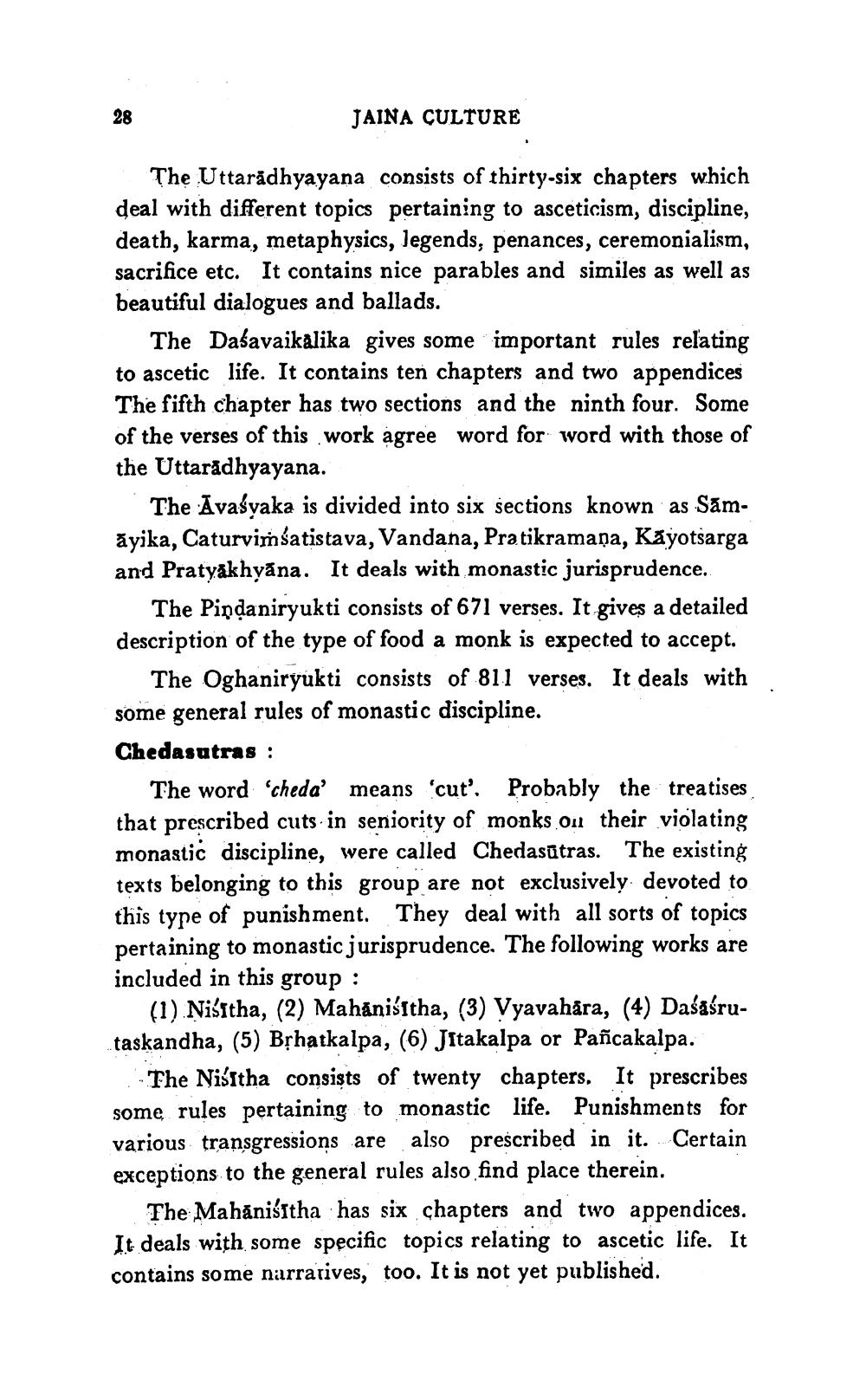________________
JAINA CULTURE
The Uttarădhyayana consists of thirty-six chapters which deal with different topics pertaining to asceticism, discipline, death, karma, metaphysics, legends, penances, ceremonialism, sacrifice etc. It contains nice parables and similes as well as beautiful dialogues and ballads.
The Daśavaikalika gives some important rules relating to ascetic life. It contains ten chapters and two appendices The fifth chapter has two sections and the ninth four. Some of the verses of this work agree word for word with those of the Uttaradhyayana.
The Avaśyaka is divided into six sections known as Samāyika, Caturvimśatistava, Vandana, Pratikramaņa, Kayotsarga and Pratyakhyāna. It deals with monastic jurisprudence.
The Pindaniryukti consists of 671 verses. It gives a detailed description of the type of food a monk is expected to accept.
The Oghaniryukti consists of 811 verses. It deals with some general rules of monastic discipline. Chedasutras :
The word 'cheda' means 'cut. Probably the treatises that prescribed cuts.in seniority of monks on their violating monastic discipline, were called Chedasūtras. The existing texts belonging to this group are not exclusively devoted to this type of punishment. They deal with all sorts of topics pertaining to monastic jurisprudence. The following works are included in this group :
(1) Nisítha, (2) Mahānisstha, (3) Vyavahära, (4) Daśāśrutaskandha, (5) Bịhạtkalpa, (6) Jstakalpa or Pañcakalpa.
The Niśítha consists of twenty chapters. It prescribes some rules pertaining to monastic life. Punishments for various transgressions are also prescribed in it. Certain exceptions to the general rules also find place therein.
The Mahāniśítha has six chapters and two appendices. It deals with some specific topics relating to ascetic life. It contains some narratives, too. It is not yet published.




